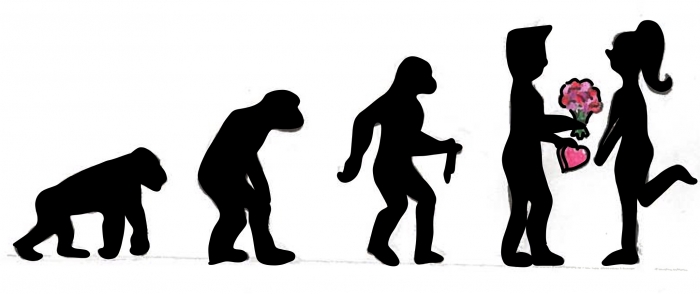As society progresses, our definitions of love have broadened and blurred into a kaleidoscope of facts and figures. Nowadays, a human can love a human, an animal can love an animal, a human can love an animal, an animal can love a 2-D character—the list goes on and on. Obviously, there is also a growing variety of ways to express love. But what do these acts of love mean, and why do we do them?
Valentine’s Day—the very embodiment of commercialized romance—has companies leaping at the chance to encourage consumers to purchase gifts for their loved ones. Gifting, however, has a biological significance. While some consider these celebrations a superficial insult, rites of gift giving and receiving may in fact have an evolutionary lineage. Professor Gad Saad, research chair in Evolutionary Behavioural Sciences at Concordia University, explained that gift giving is ingrained in our biological blueprint.
“When you have sexually reproducing species, each sex looks for certain attributes in the opposite sex for specific evolutionary reasons,” Saad said. “The male typically will engage in what’s called nuptial gift giving. The idea in the human context is to demonstrate cues of generosity, of investment, of concern, […] cues that are attractive to the opposite sex.”
Nuptial gift giving, which in the animal kingdom refers to the act of males giving tokens or food items to females as part of their courtship ritual, is most prevalent among insects and birds. Its role in the evolution of courtship rituals is a hot research topic for many biologists.
However, some researchers believe that the gifts given on Valentine’s Day are a separate idea from giving nuptial gifts. According to Simon Reader, an associate professor in McGill’s Department of Biology, genetic evolution has very little to say about the origins of Valentine’s Day rituals, which are almost entirely the result of cultural evolution.
“There are examples [that] look like gift giving in non-human animals, including many insects,” Reader wrote to The McGill Tribune in an email. “In these species, individuals that provide gifts tend to be more likely to mate successfully. However, I am doubtful whether these behaviours in animals say anything useful for understanding human gift giving or Valentine’s Day.”
Nowadays, ‘advertisements’ and ‘consumerism’ are words that are almost synonymous with Western culture, especially when these ads relate to romance. De Beers Jewellers notably capitalized on the power of advertising in the 1930s, when their ad campaign invented the tradition of diamond wedding rings and gave the gem new cultural significance.
Yet despite how capitalism has played its hand in the game of artificial love, Saad explained that the very act of giving gifts remains a primal instinct cultivated by sexual selection. Although the gifts themselves may change, the desires that motivate this ritual of courtship remain true to nature. According to the National Retail Federation, in the U.S., people spend upwards of $19.6 billion on Valentine’s Day alone.
“It’s not the specific chocolate or flowers or diamond rings that’s evolutionary,” Saad noted. “That’s modern culture. And that’s what Valentine’s Day is—it’s an opportunity to reaffirm the fact that ‘I am attentive enough to go out, spend my time, spend my money, demonstrating to you that I care about you and want to invest in you.’ And that’s something that’s really desirable in terms of human courtship.”






